
The Maria Bonnier Dahlin Foundation Grant Recipients
11 dec 2024 – 19 jan 2025
The Maria Bonnier Dahlin Foundation annually awards grants to young artists to support and promote their work. As part of the grant, an extensive exhibition is produced at Bonniers Konsthall where their works are shown to a large audience, often for the first time. The 2024 grant recipients explore in their artistry the human relationship to the world around them through sculpture and installation. They share an interest in architecture and a fascination with found objects. Anastasia Savinova transforms these materials into unique sculptural constructions that reflect on our ecology, while Erik Thörnqvist explores how abstract ideas and ideologies can take physical form through objects and social structures.
By reshaping traditional objects, Erik Thörnqvist (b. 1994) gives them new symbolic meaning that express agency and freedom, beyond their original functions. Particularly interested in the role of ornamentation within modernism, he questions its place in designed environments and explores how these aesthetic expressions can create space for subversive interpretations and queer representation. Deliberately coded and ambiguous, Thörnqvist’s works resist easy interpretations and defy norms in a powerful way, engaging the viewer to confront social issues and creating new narratives where body and identity can be renegotiated and redefined.
Raum Planner (2024) presents a 1:1 detail of the interior of Villa Müller, inspired by Adolf Loos’s ‘Raumplan’ concept, where rooms are given different height levels based on their function rather than being placed on separate floors. Here Thörnqvist explores the boundary between private and public, with themes of transparency and voyeurism. Inspired by architectural historian Beatriz Colomina’s analysis of Villa Müller in Sexuality and Space (1992), the work explores the tension between power and vulnerability, especially through an elevated seating area that allows for both observing and being observed.
The installation Un chant d’amour (2024), inspired by Jean Genet’s film with the same title, links to Thörnqvist’s themes through its exploration of boundaries, intimacy and the structures that dictates human interaction. Through the architecture of the prison and a scene where two prisoners share cigarette smoke through a straw to overcome isolation, the film highlights how people can be both close and unreachable. This reflects Thörnqvist’s interest in the body and power in constructed environments. Above all, the installation creates a place where fiction and reality meet – where we can fantasise about who is on the other side.
Curator: Yuvinka Medina
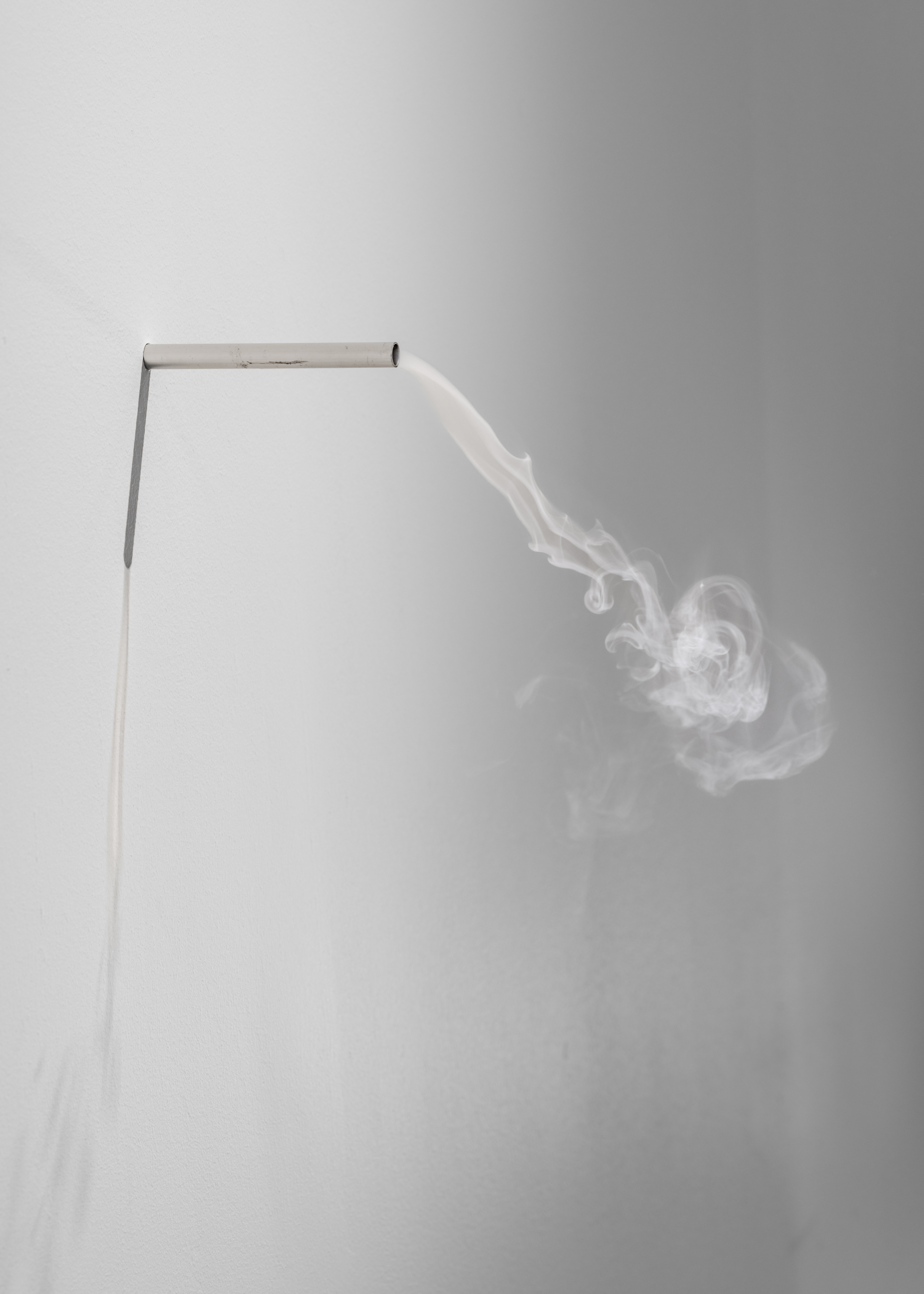
Un chant d’amour, 2024
12x1x1 cm
Aluminiumrör, luftfuktare / Aluminum tube, diffuser
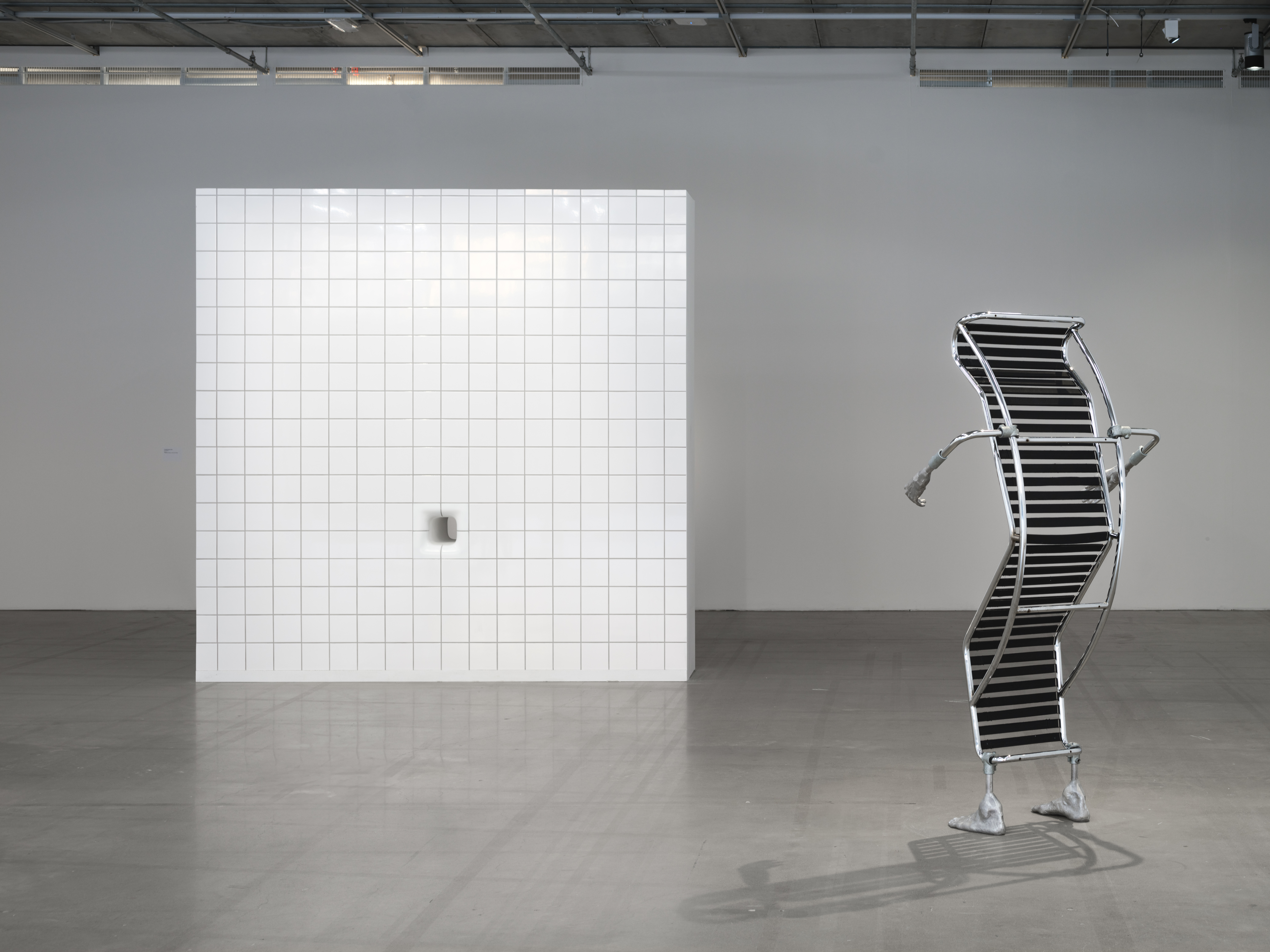
Politics of a Hole, 2024
270x330x50 cm
Kakel, kakelfog, PLA, akryl, lack / Ceramic tiles, grout, PLA, acrylics, lacquer
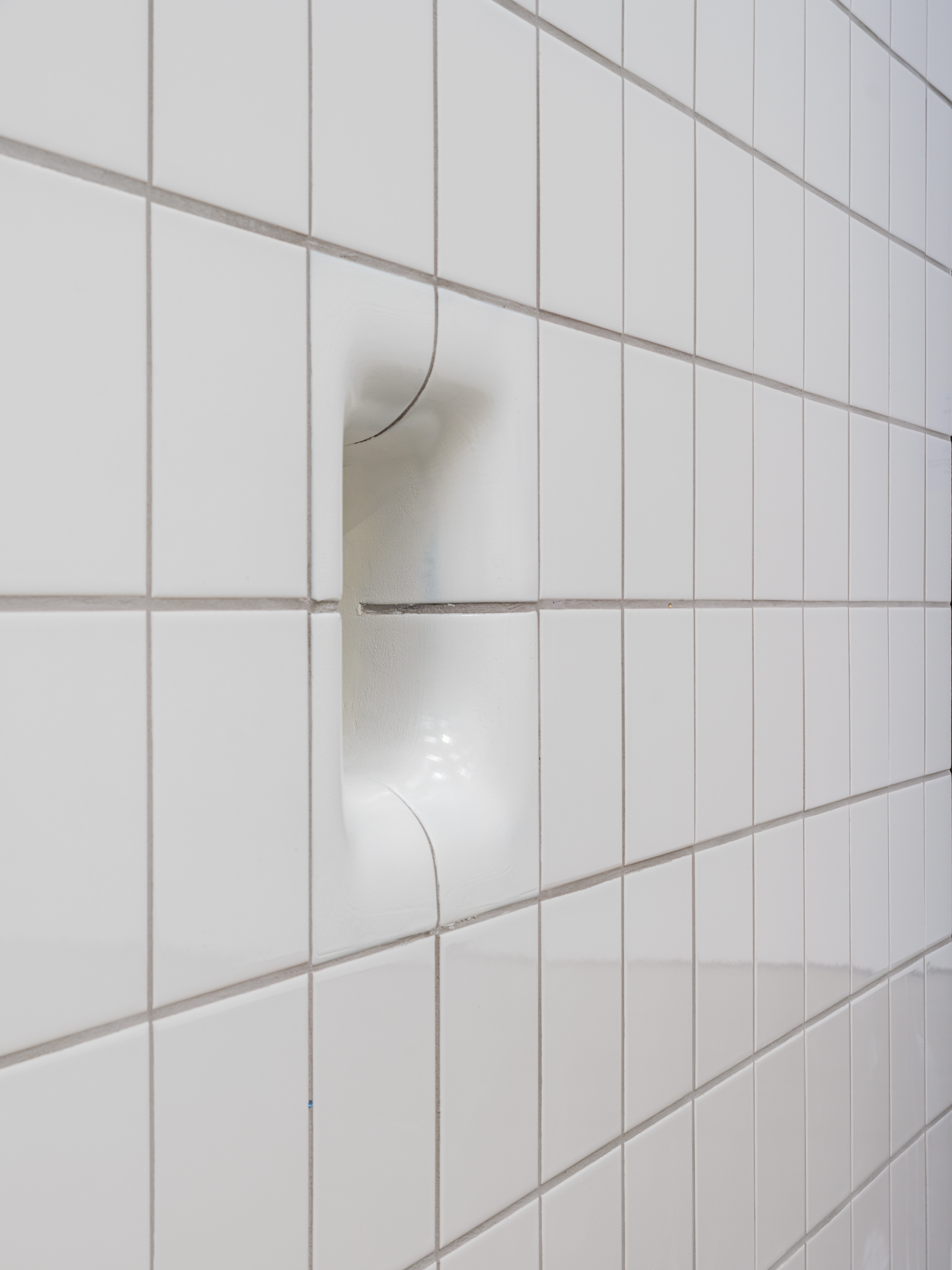
Stark, sleek, hard, cold, metallic, seductive, shiny, and out of this world
An in-depth text on Thörnqvist’s artistry by independent curator and writer Tal Gilad.Stark, sleek, hard, cold, metallic, seductive, shiny, and out of this world–this is the foundational vocabulary I use when approaching Erik Thörnqvist’s body of work, currently on display in the pristine gallery space of Bonniers Konsthall. However, I have around 700 words to describe beyond what you vividly see and feel, yet also to invite you to engage with the insecurities that come with the freedom of subjective analysis and mindful interpretation.
Other Dead Giveaways A flower, a fruit, facial hair, jewellery, a piece of clothing – a giveaway to help the ones with a broken gaydar. This collection – an array of day-to-day objects – is displayed on custom-made podiums, all holding symbolic meaning in public/ private context and LGBTQIA+ history, as signifier objects that help us to find each other in the shadows. It is what we today read as queer aesthetics before it got refined and blended into mainstream culture by the 1990s metrosexuals. The texts on the labels are fictitious diary entries written and edited by AI.
Un chant d’amour A homage artwork in reference to Jean Genet’s only film- isolates the famous scene of cigarette smoke migrating between two sides of a prison cell wall through a thin straw. Although filmed in 1950, it will still take your breath away. It captures an enduring thirst for love and touch in solitary confinement – pure desire and tenderness. Discreetly, one can go and place one’s face on the fumes and fantasise about being fantasised about.
Standmaschine Previously described as a deconstruction of the European Modern project, these humanised chairs embody the intersection of contemporary and classic design. As popularity leads to replicas bought by the unaware, we must question: does authenticity matter? Ultimately, the furniture confronts us with its aesthetic qualities, challenging its intended functionality.
Politics of a Hole Is part of a series of sculptures that reflects the historic shift toward white tiles in domestic spaces and promotes an aesthetic of absolute cleanliness while also hinting at the anonymity of public sex. These artworks reinterpret the glory hole, integrating it into tile designs with smooth curves that highlight the oppressive aesthetic of Folkhemmet.
Finook Language can unearth hidden, dark histories. The homophobic slur Finook, from Italian finocchio (fennel), dates to a time when gays were murdered and burned in abundance in Europe – they used fennel to mask the smell of burning flesh. What does the casting of a bulb of fennel mean – like an industrial trompe l’oeil for a fake fruit bowl – a never-rotting vanitas where death doesn’t happen?
Étant Donnés: 1. Le Prêtre 2. Le Fermier 3. Le Fenouil (Given: 1. The Priest 2. The Farmer 3. The Fennel) This peephole work is made in reference to Duchamp’s super problematic work Étant donnés: 1. la chute d’eau et 2. le gaz d’éclairage (Given: 1. The Waterfall, 2. The Illuminating Gas) that has been suggested to be connected to the death of the black Dalia.
Krasch This pre-construction hybrid combines 3D scans of classic artworks, forming a fragmented, modern-day Greek god hero. It echoes the composition of Goya’s etching, This is Worse, from The Disasters of War, which features a dead man inspired by the Belvedere Torso. Art history teaches us that the most beautiful pieces are broken fragments, like the remains of Greek sculptures – a melancholic reminder of a glorious past that highlights what is forever lost.
Vaseline Vision The blurred abstract photograph, taken in Los Angels, near the infamous Vaseline Alley, captures a detail of a knock off ”Tom of Finland” T-shirt spotted in a shop window. The artist visited one of the most legendary cruising spots in gay history only to discover an empty parking lot. You can interpret this as an aestheticisation of All I Got Was This Lousy T-Shirt souvenir reflecting an attempt to glorify an experience of detachment.
Abseiling to a Gay Beach On the Côte d’Azur, there is a historic gay beach accessed through a corner of a traditional family beach. The journey involves navigating dangerous boulders, cliffs, and jagged rocks. The final stage of the 30-minute trek requires the abseiling of a five-meter rope, here recreated as an artwork. This representation can be a broader metaphor for the challenges marginalised groups still need to face today.
Before / After Is a found object – an illustration of what seems to be the moment before and the moment after (dinner). The Pictures Generation gesture of appropriation is shown surrounded by work that requires heavy labour. Reminiscent of a 1980s advertisement, it evokes a sense of romantic conceptualism.
What happened?
Something
that
changed
everything.
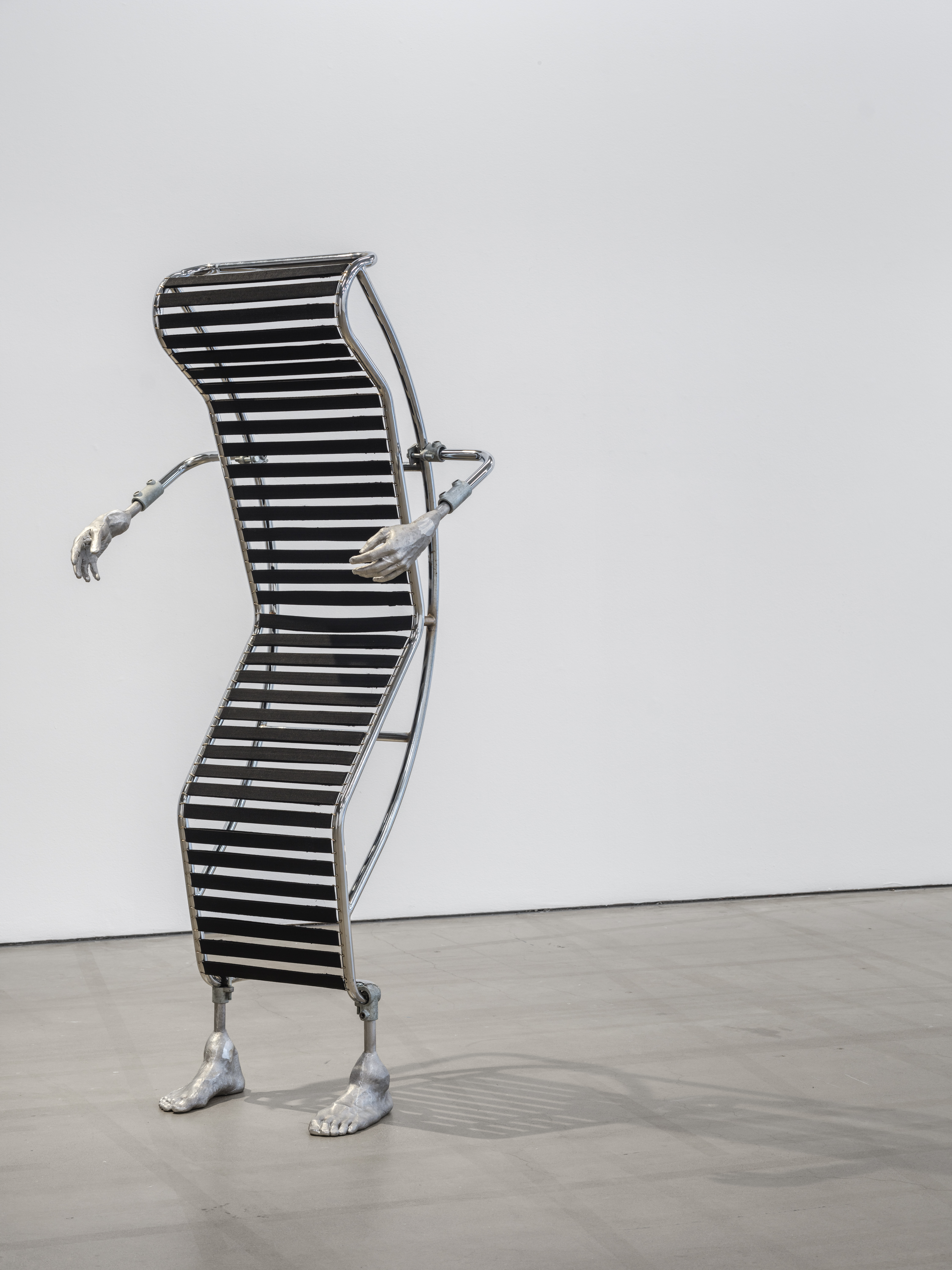
Standmaschine II, 2022
185x80x40 cm
Gjuten aluminium, rörkopplingar, Chaise longue basculante
av Charlotte Perriand /
Cast aluminium, Scaffolding joints, Chaise longue basculante
by Charlotte Perriand
Privat samling / Private collection
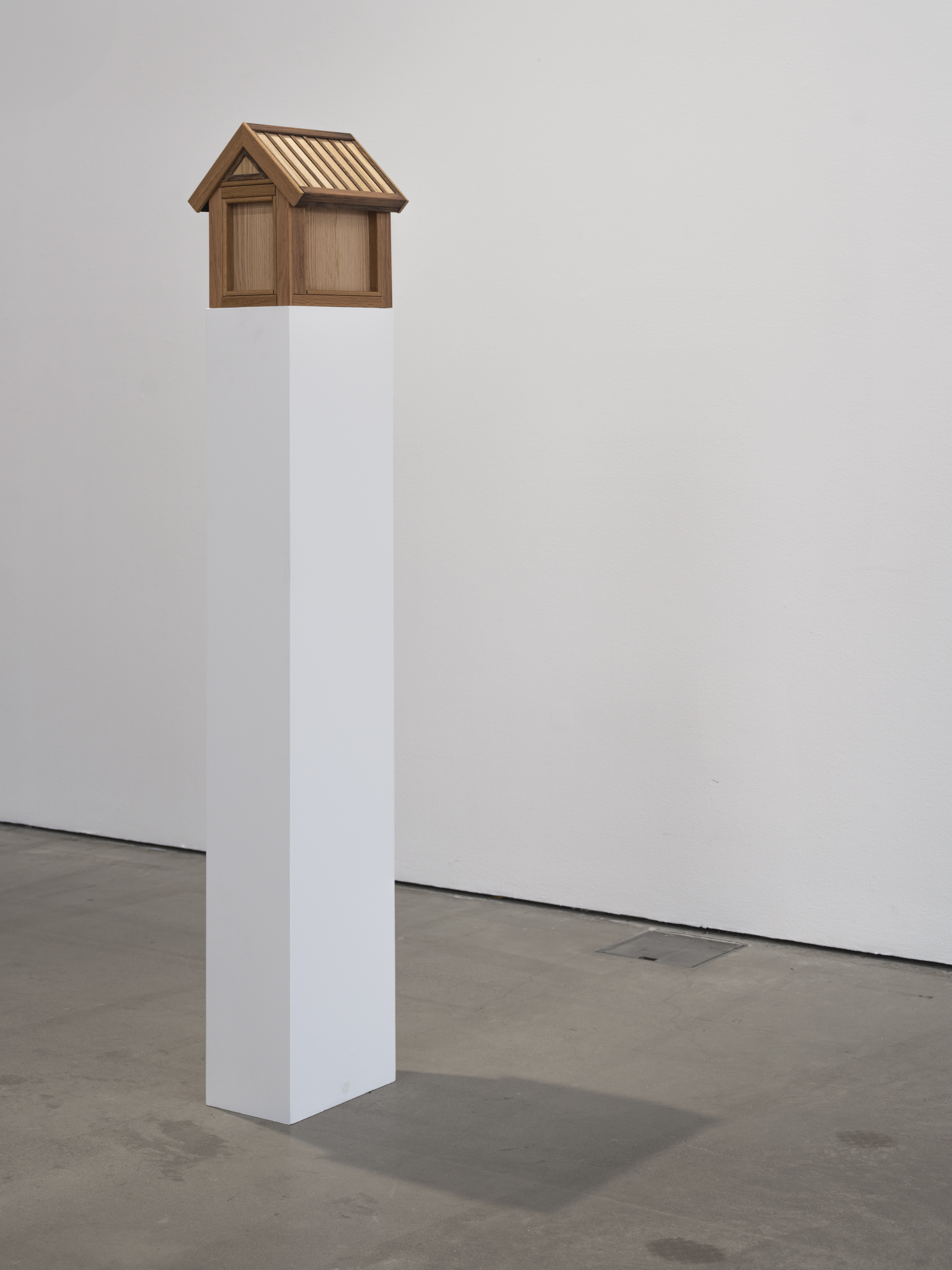
Étant Donnés: 1. Le Prêtre 2. Le Fermier 3. Le Fenouil, 2024
33x30x27 cm
Ek, furu, MDF, PLA, mosaik, stål, glas, mossa, akryl, lack, tusch /
Oak, pine, MDF, PLA, mosaic, steel, glass, moss, acrylics, lacquer, ink
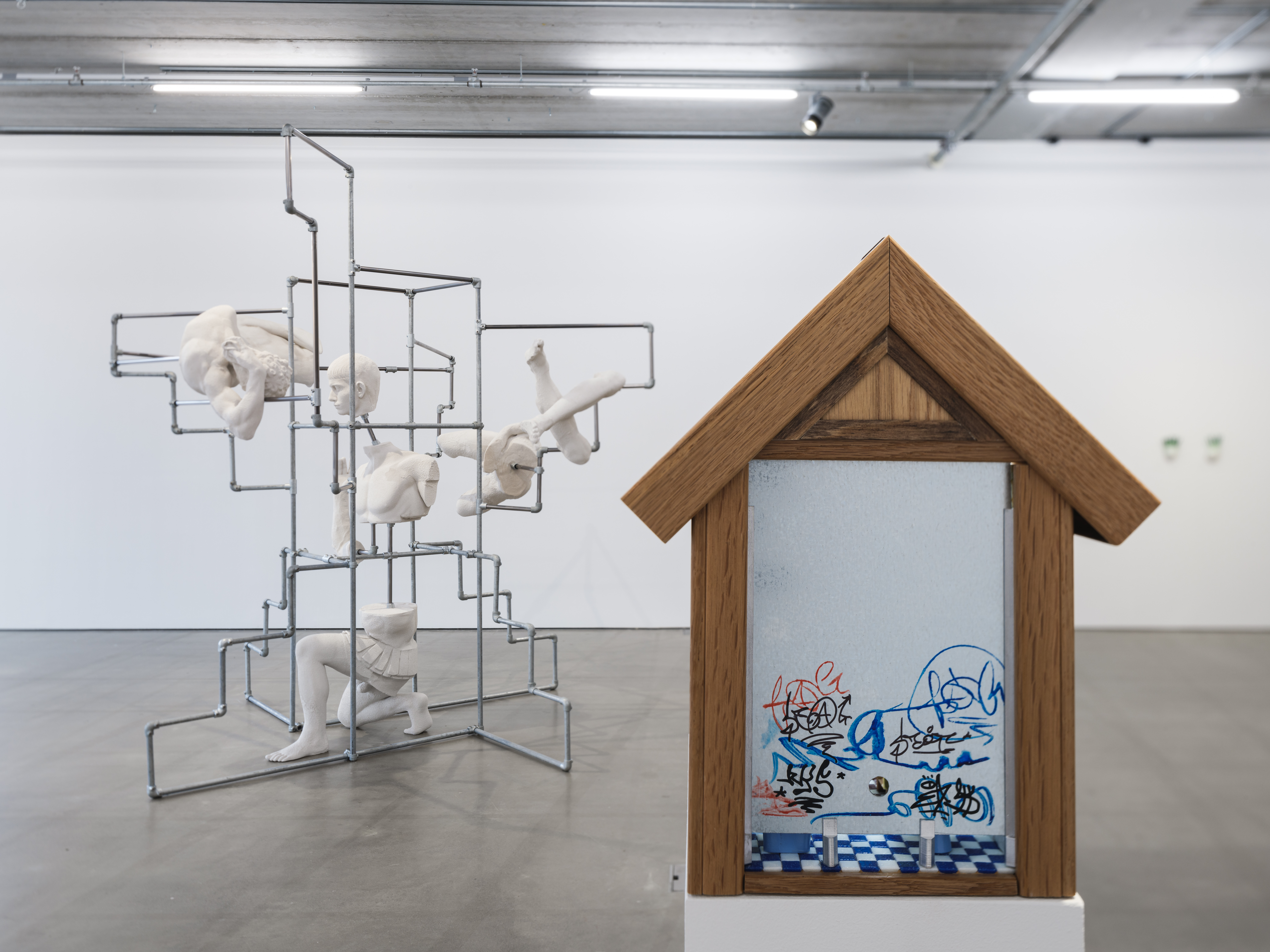
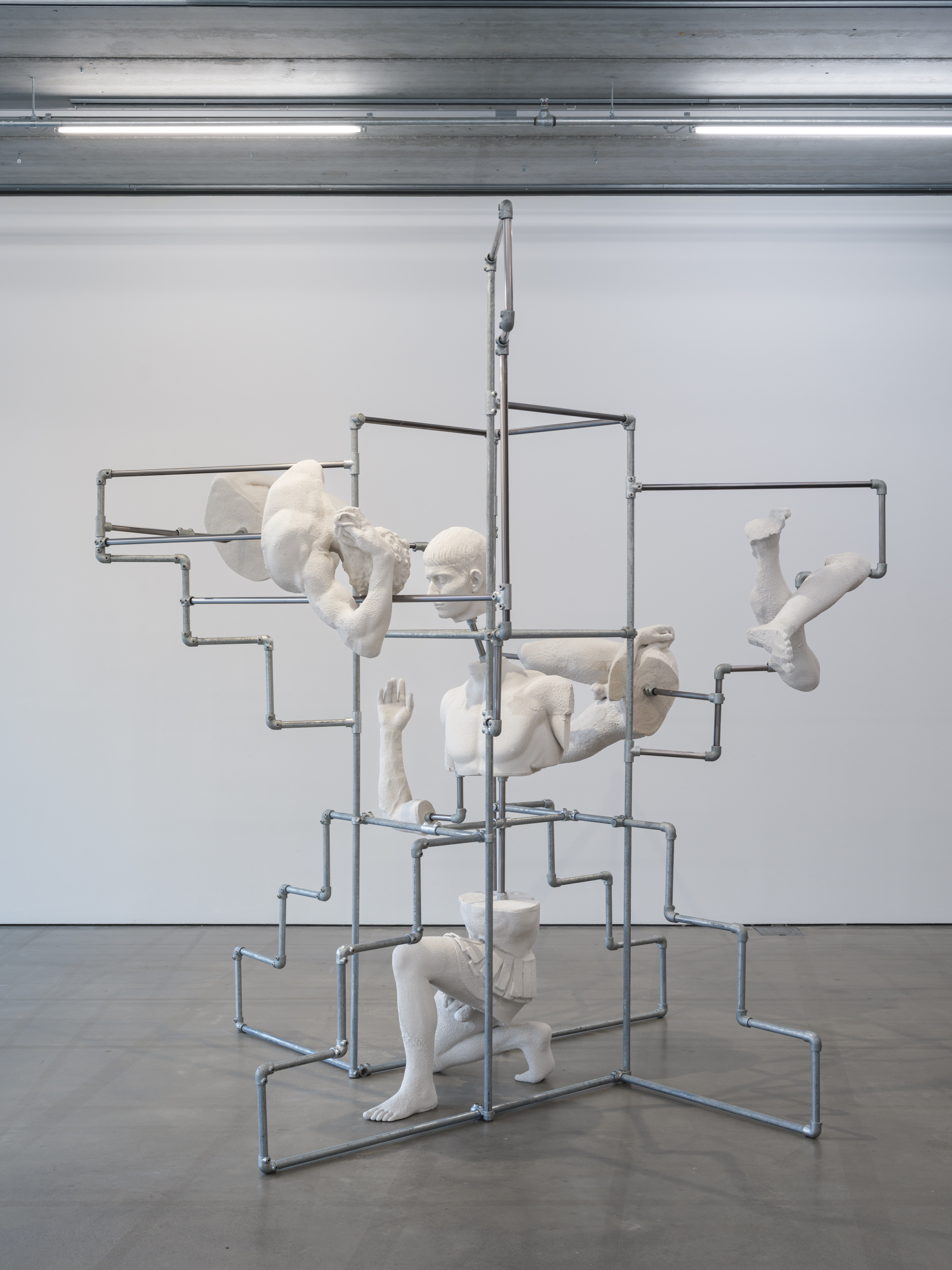
Krasch, 2024
350x300x300 cm
Stål, galvaniserat stål, PLA, naturgips, rörkopplingar /
Steel, galvanized steel, PLA, plaster, scaffolds
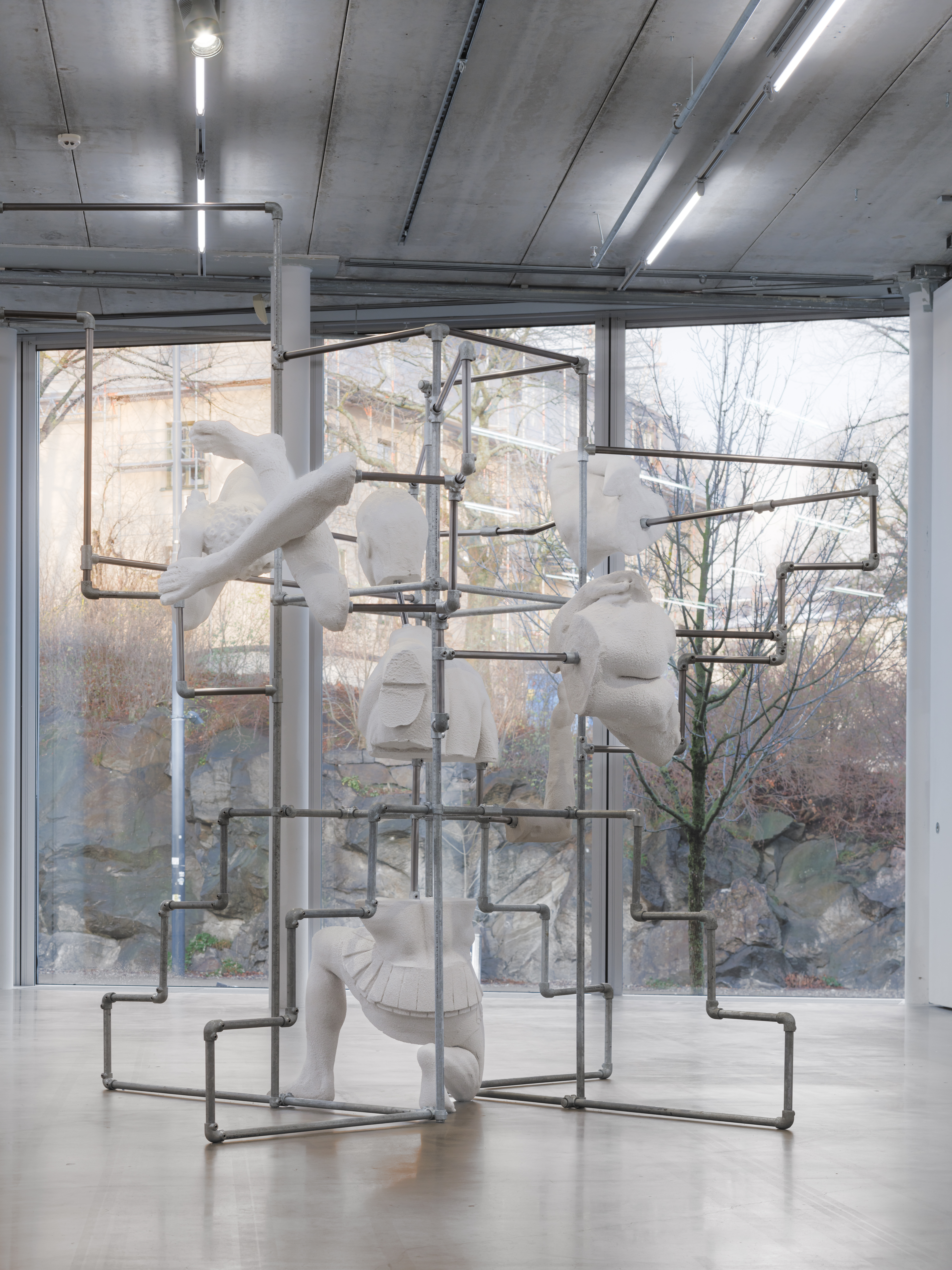

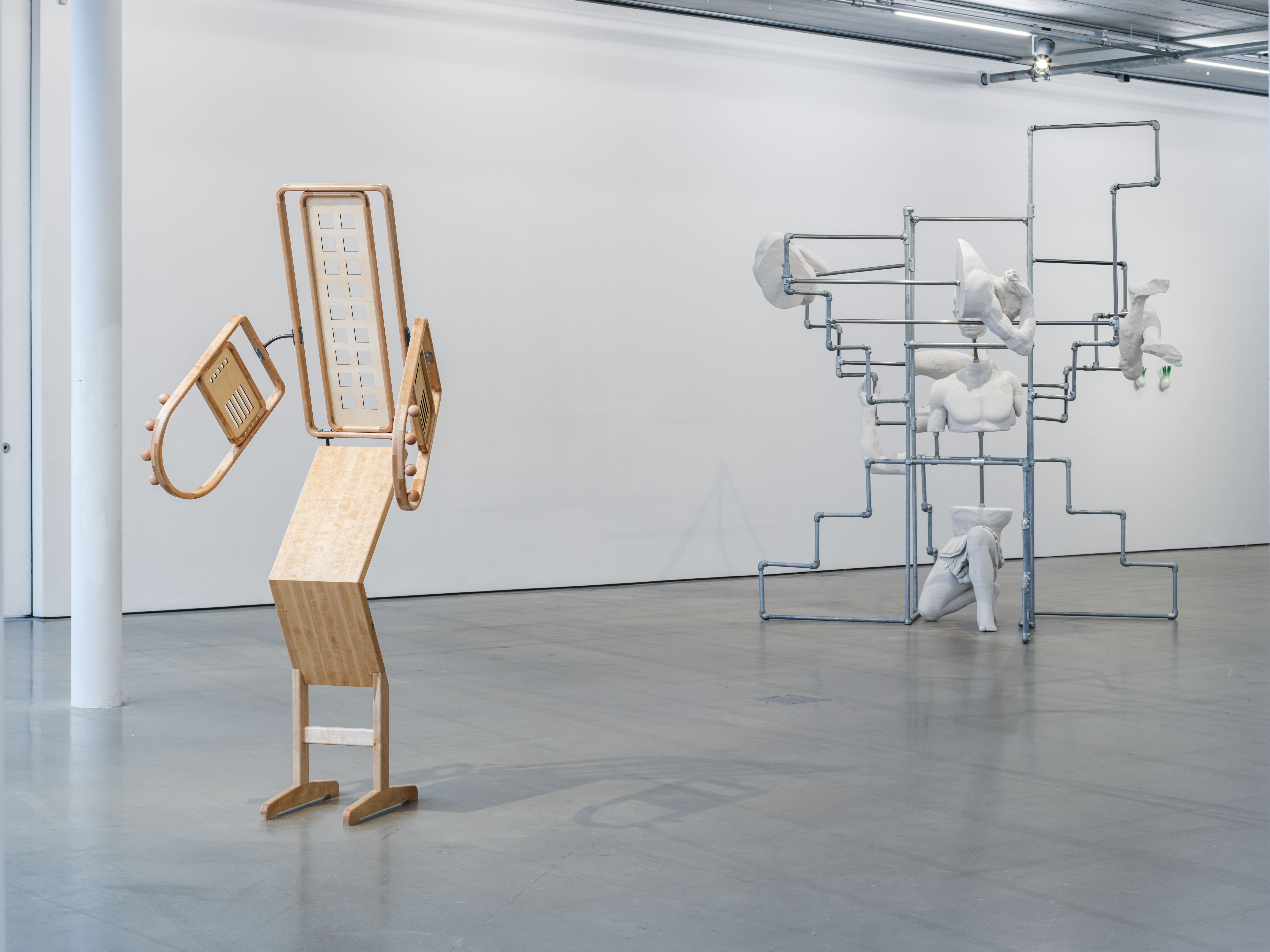
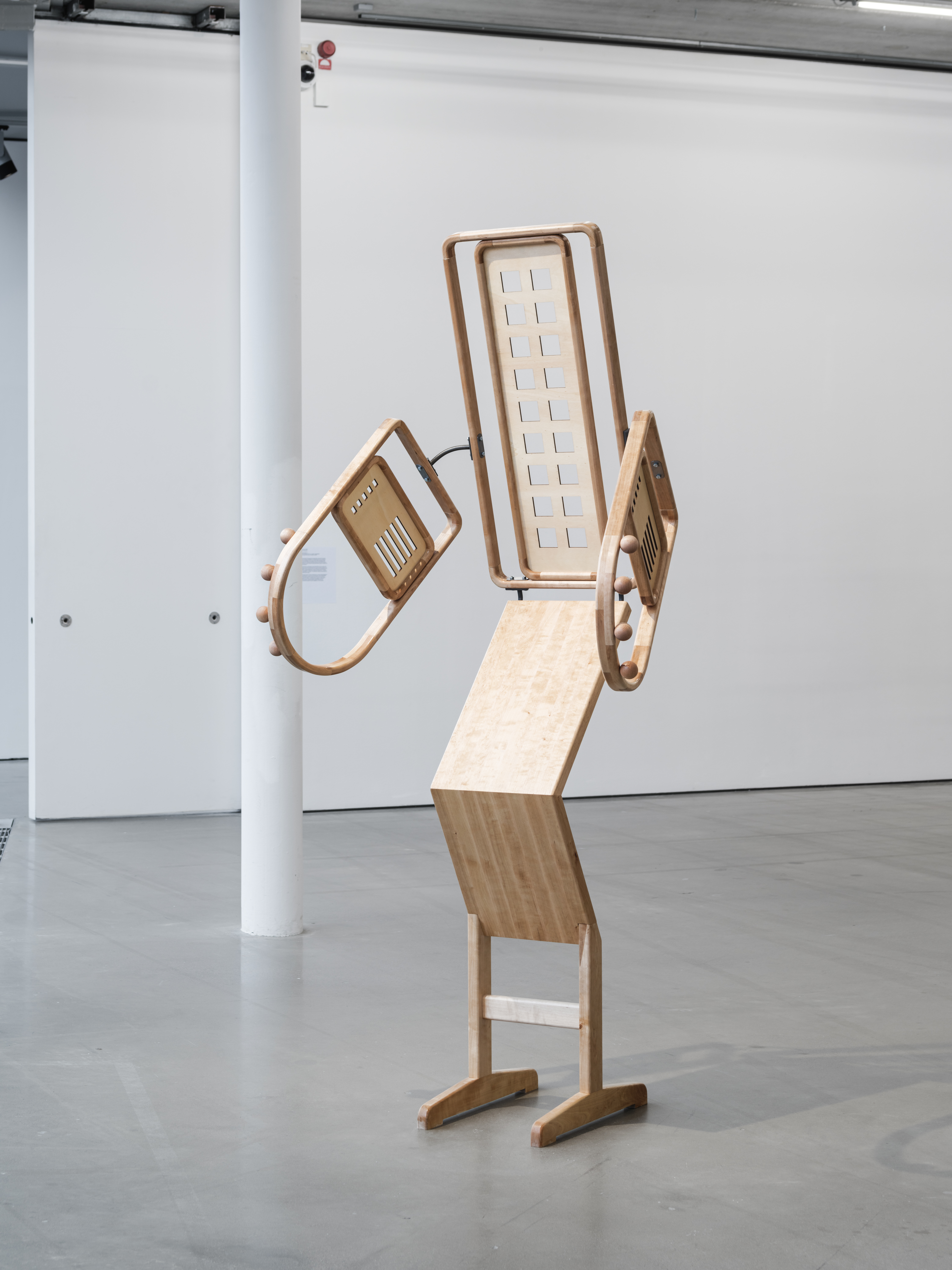
Standmaschine I, 2023
220x80x60 cm
Björk, stål / Birch, steel
Statens Konstråds samling / Collection of Public Art Agency Sweden

Raum Planner, 2024
450x350x50 cm
Galvaniserat stål, rörkopplingar, jesmonite, vax /
Galvanized steel, scaffolds, jesmonite, wax
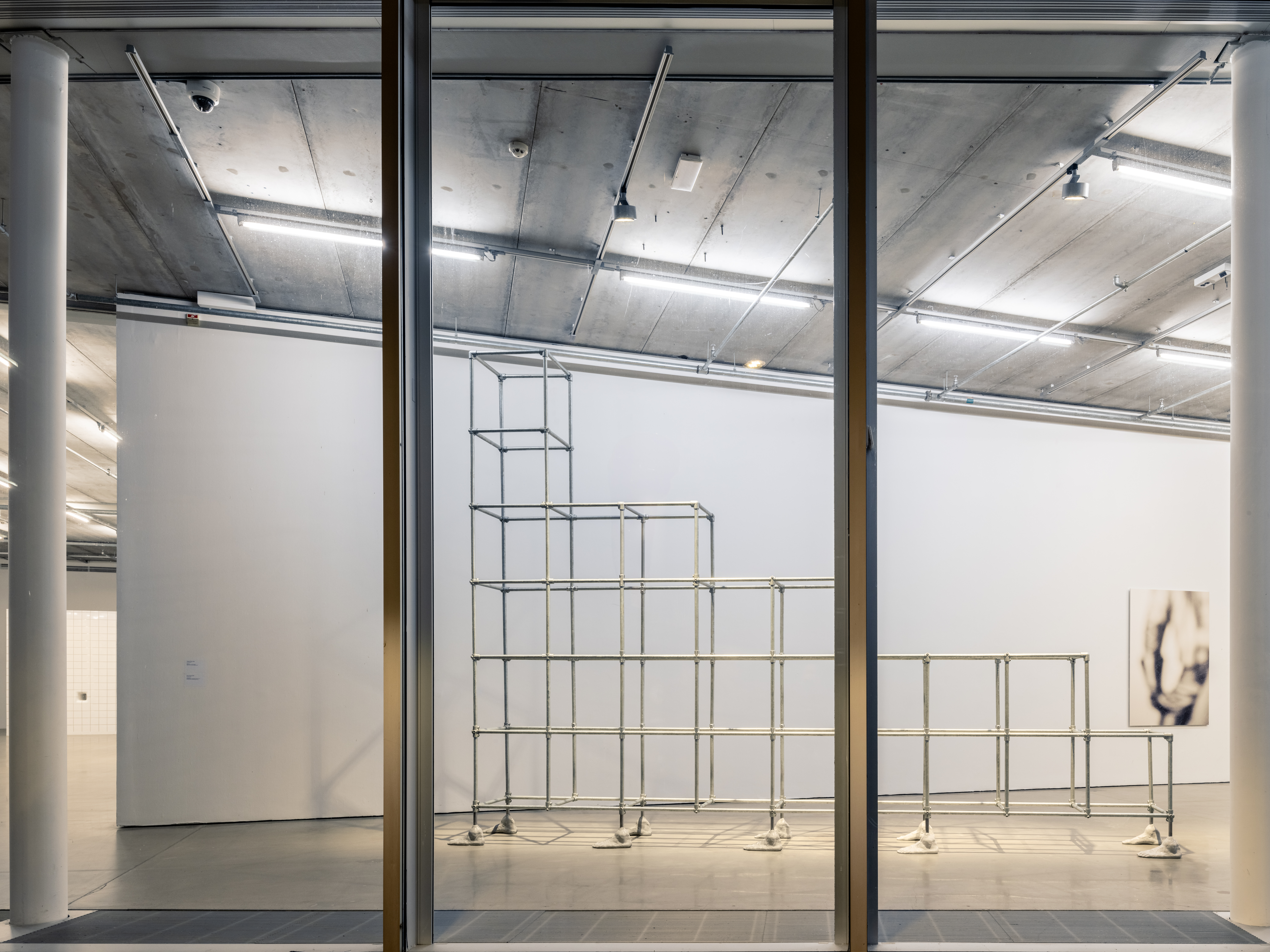


Natural Born Sitter, 2024
210x60x55 cm
Rostfritt stål, rörkoppling, jesmonite /
Stainless steel, scaffolds, jesmonite
Courtesy konstnären och / the artist and
Galerie Nordenhake Berlin / Stockholm / Mexico City.

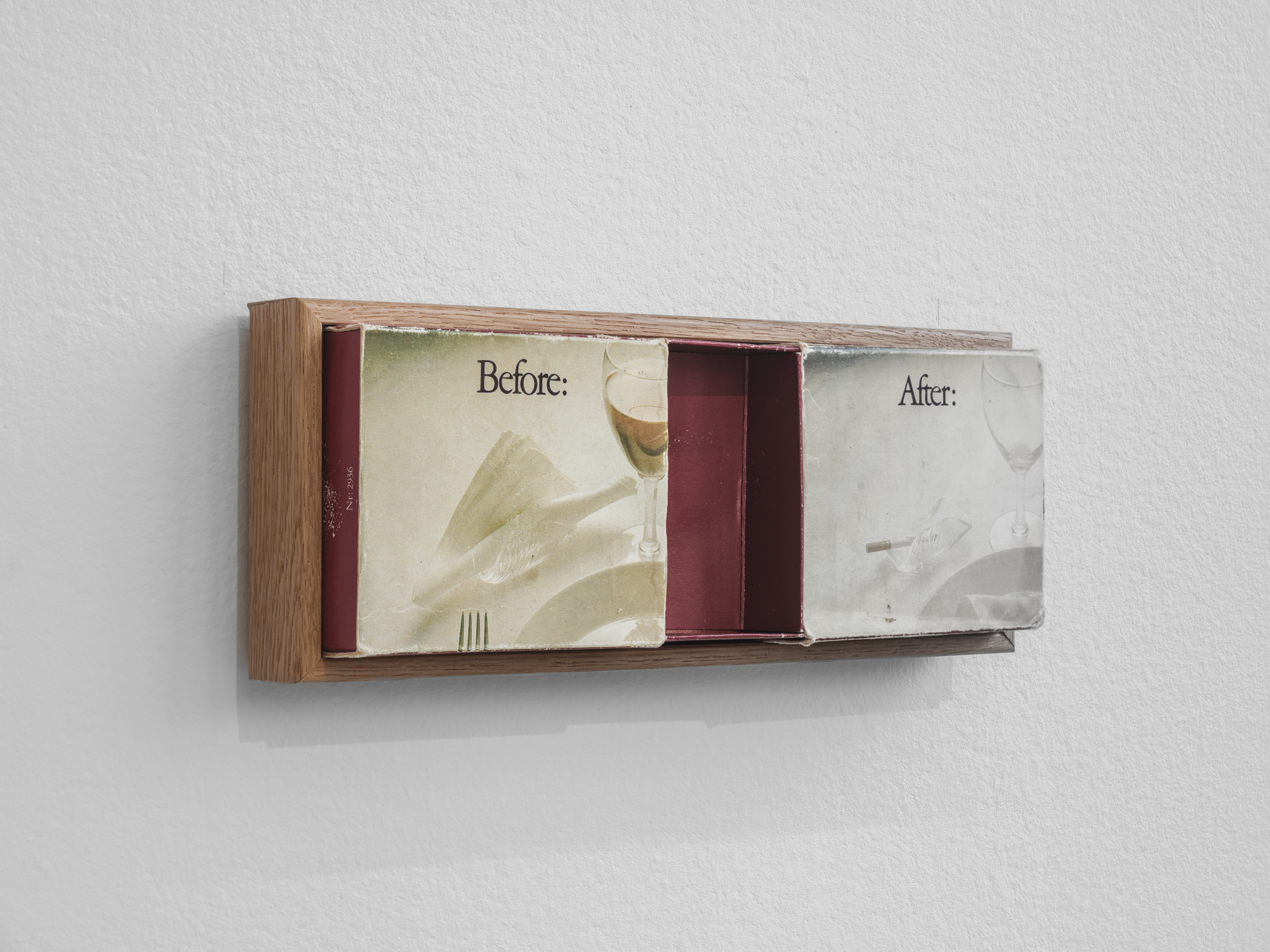
Before / After, 2024
30x10x5 cm
Kartong, MDF / Cardboard, MFD
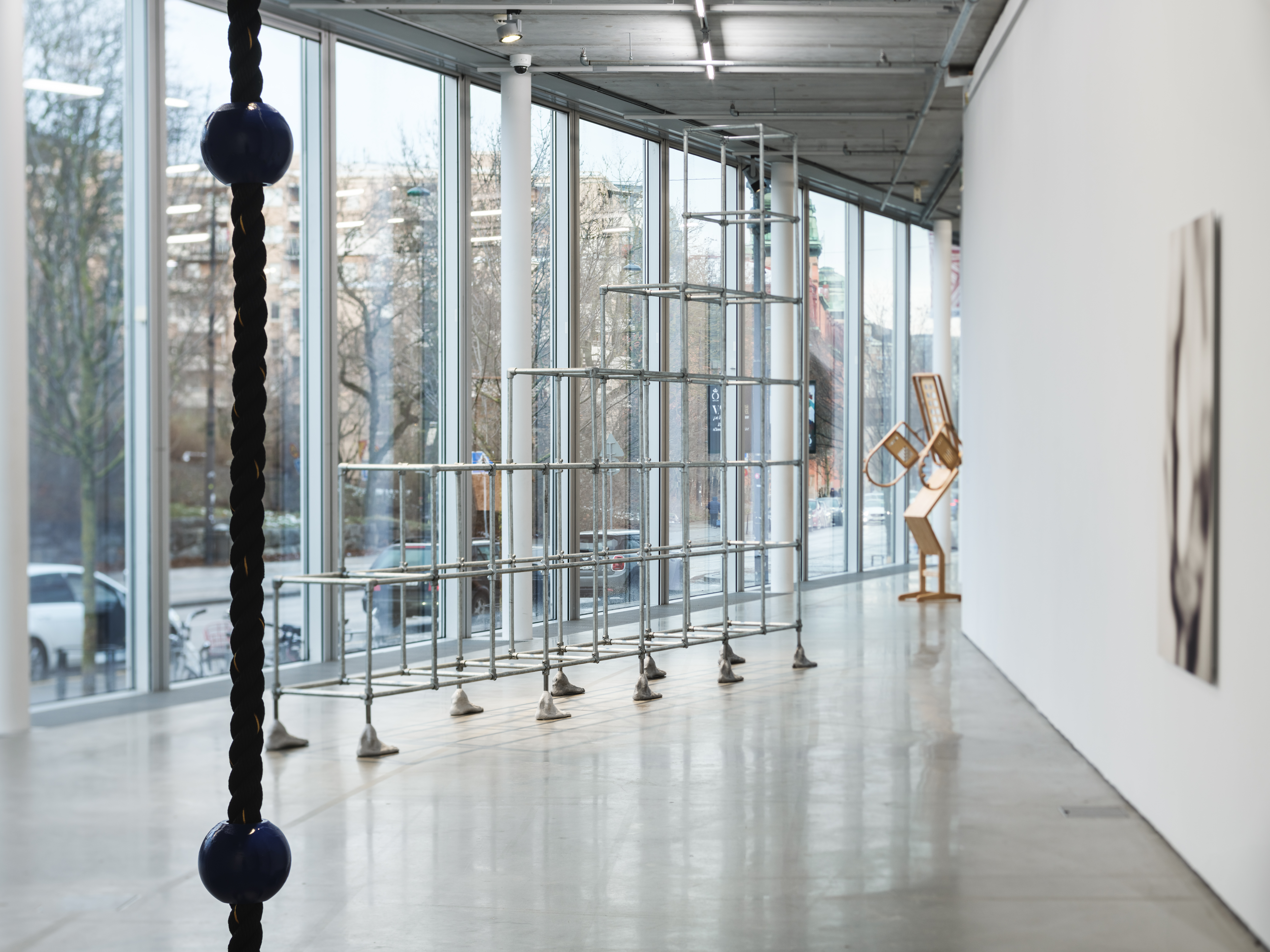
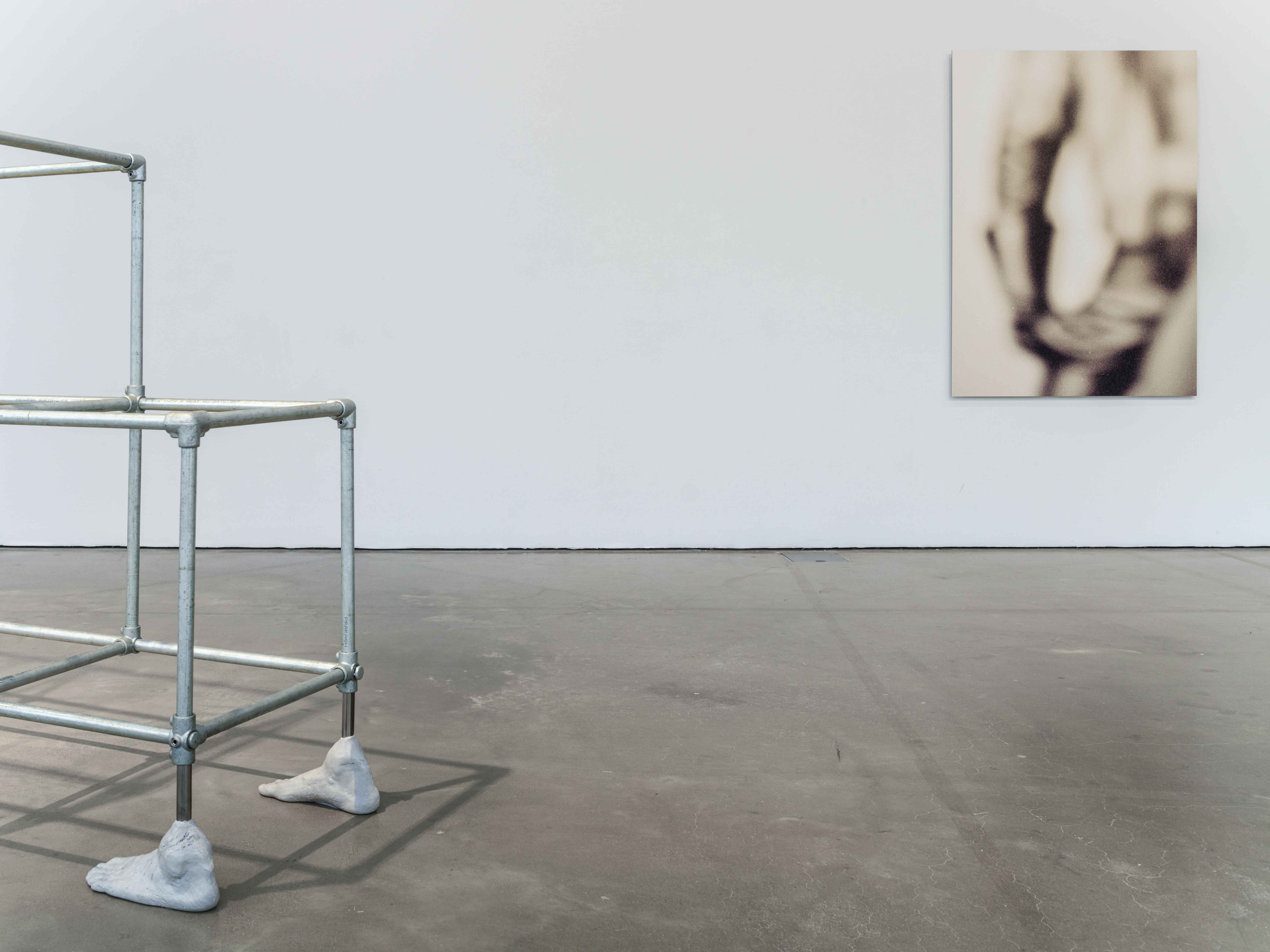
Vaseline Vision, 2023
150x90 cm
Digital print av scannat negativ /
Digital print of scanned analogue photo
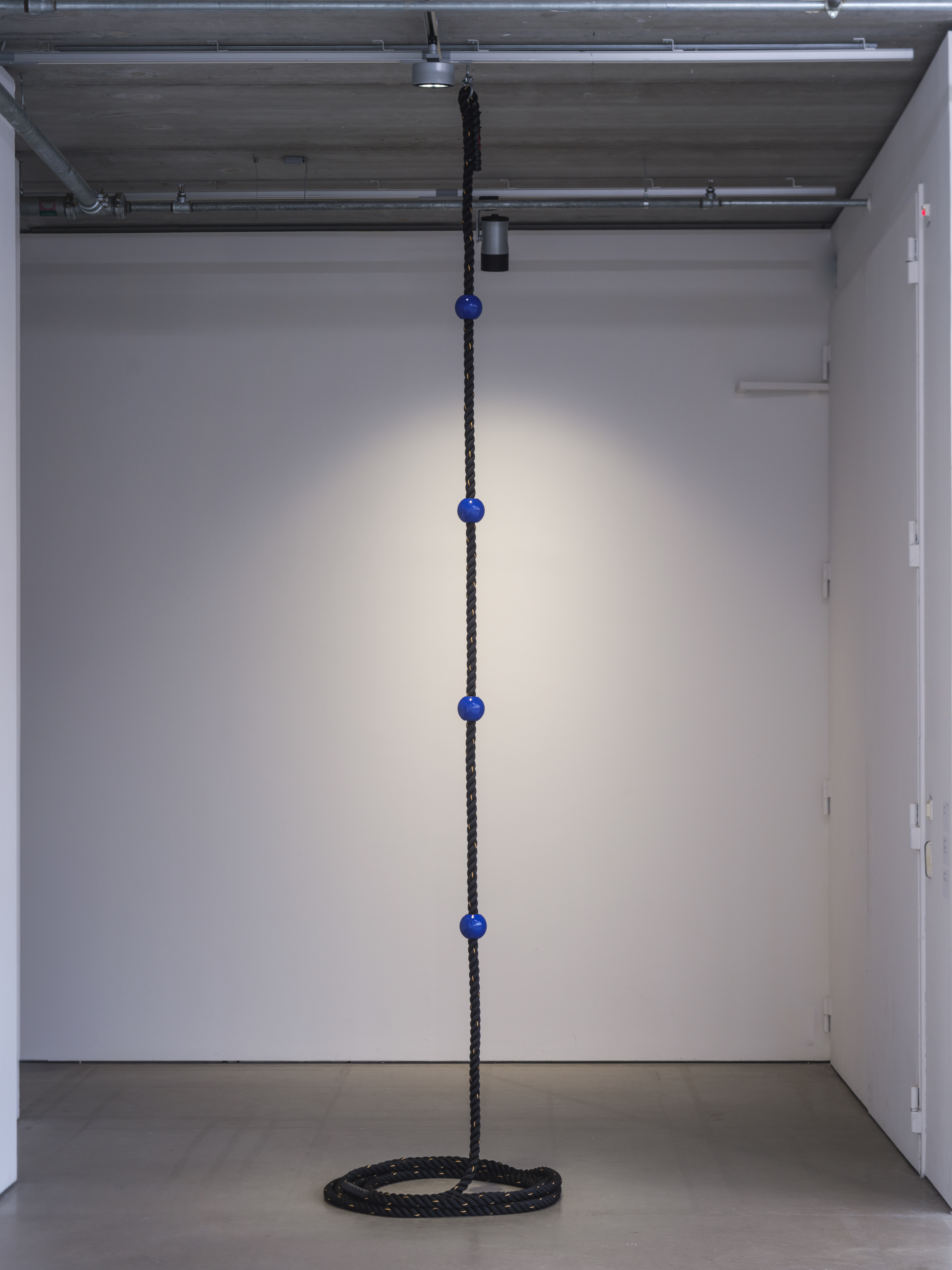
Abseiling to a Gay Beach, 2024
Varierande mått / Dimensions variable
Rep, PLA, akryl, lack / Rope, PLA, acrylics, lacquer

Other Dead Giveaways, 2024
Varierande mått / Dimensions variable
Marinblå näsduk, gipsananas, silverörhänge, fuskmustasch, gröna
plastnejlikor, metalltratt, vita tubsockor med ränder, Oscar Wilde-grön /
Navy handkerchief, plaster pineapple, silver earring, faux mustache, green
carnations, metal funnel, striped tube socks, Oscar Wilde green
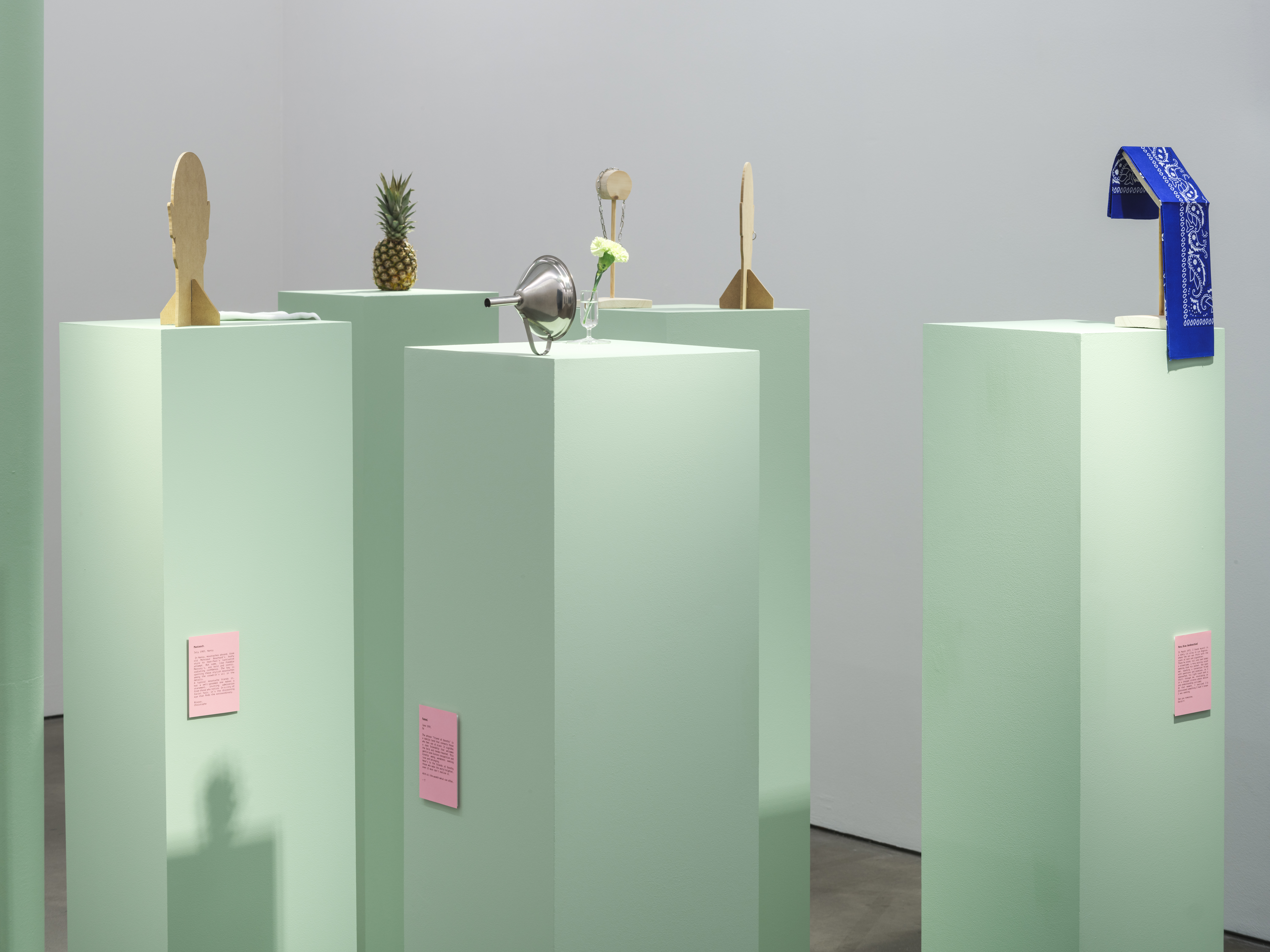
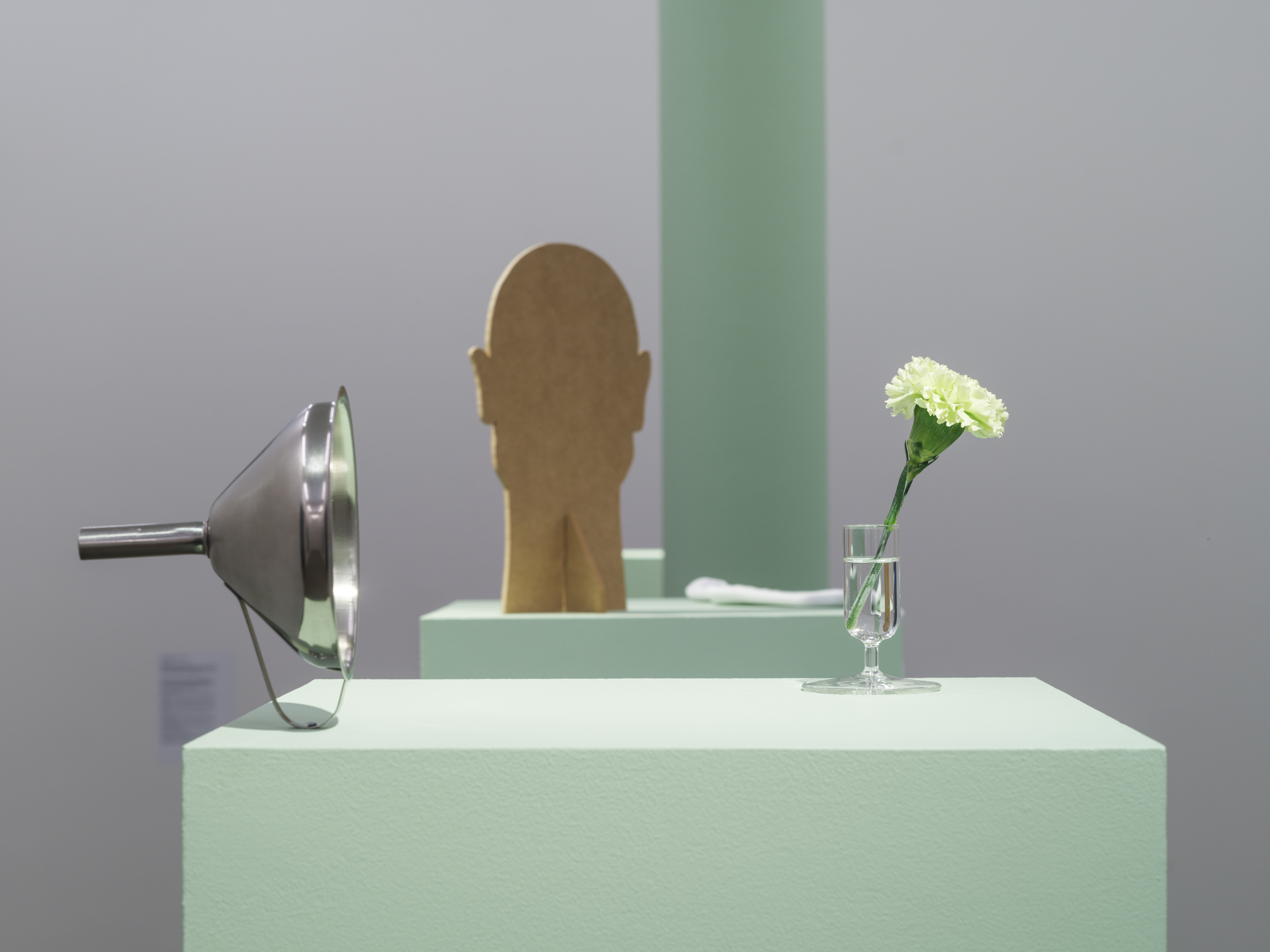
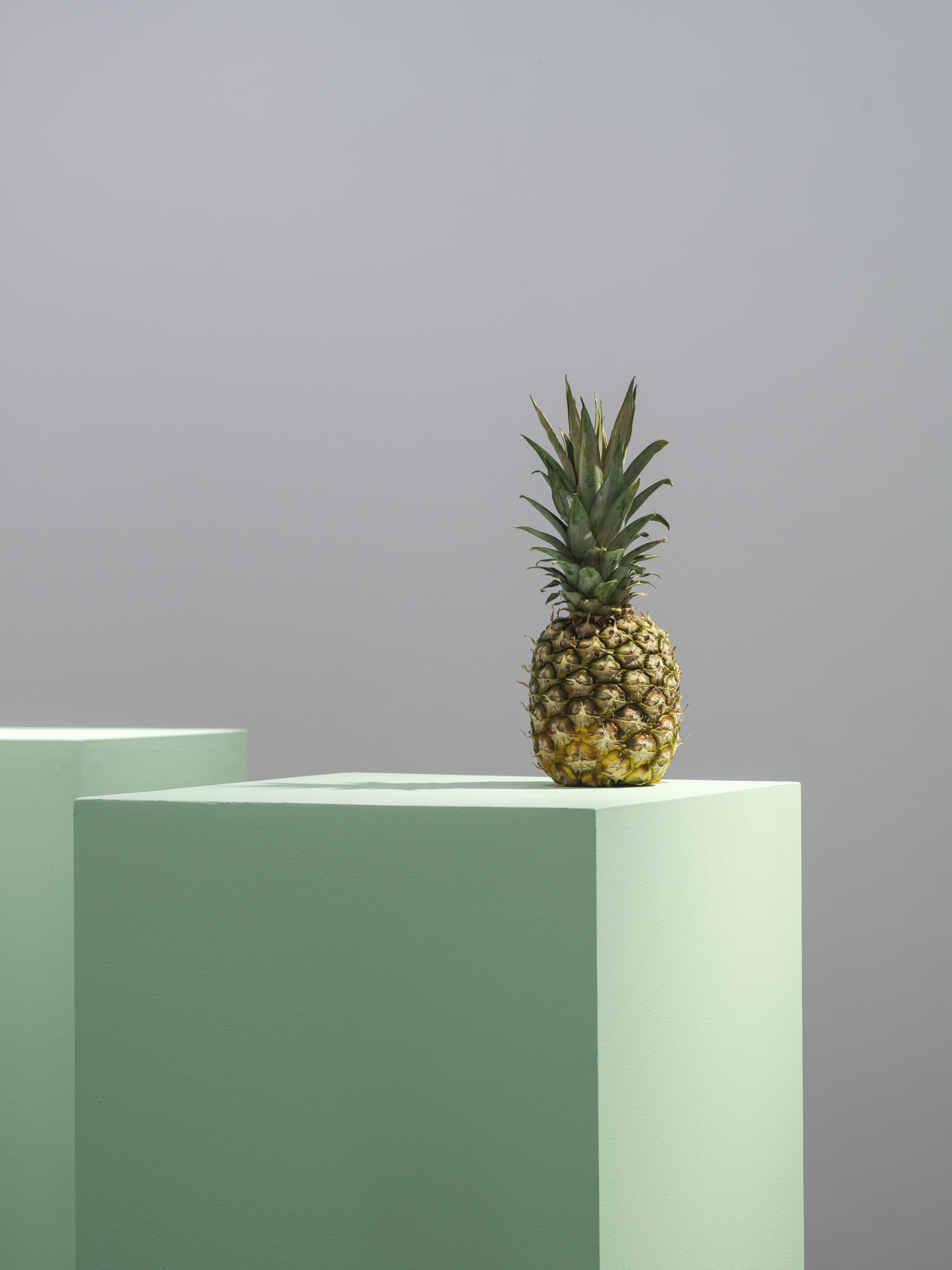

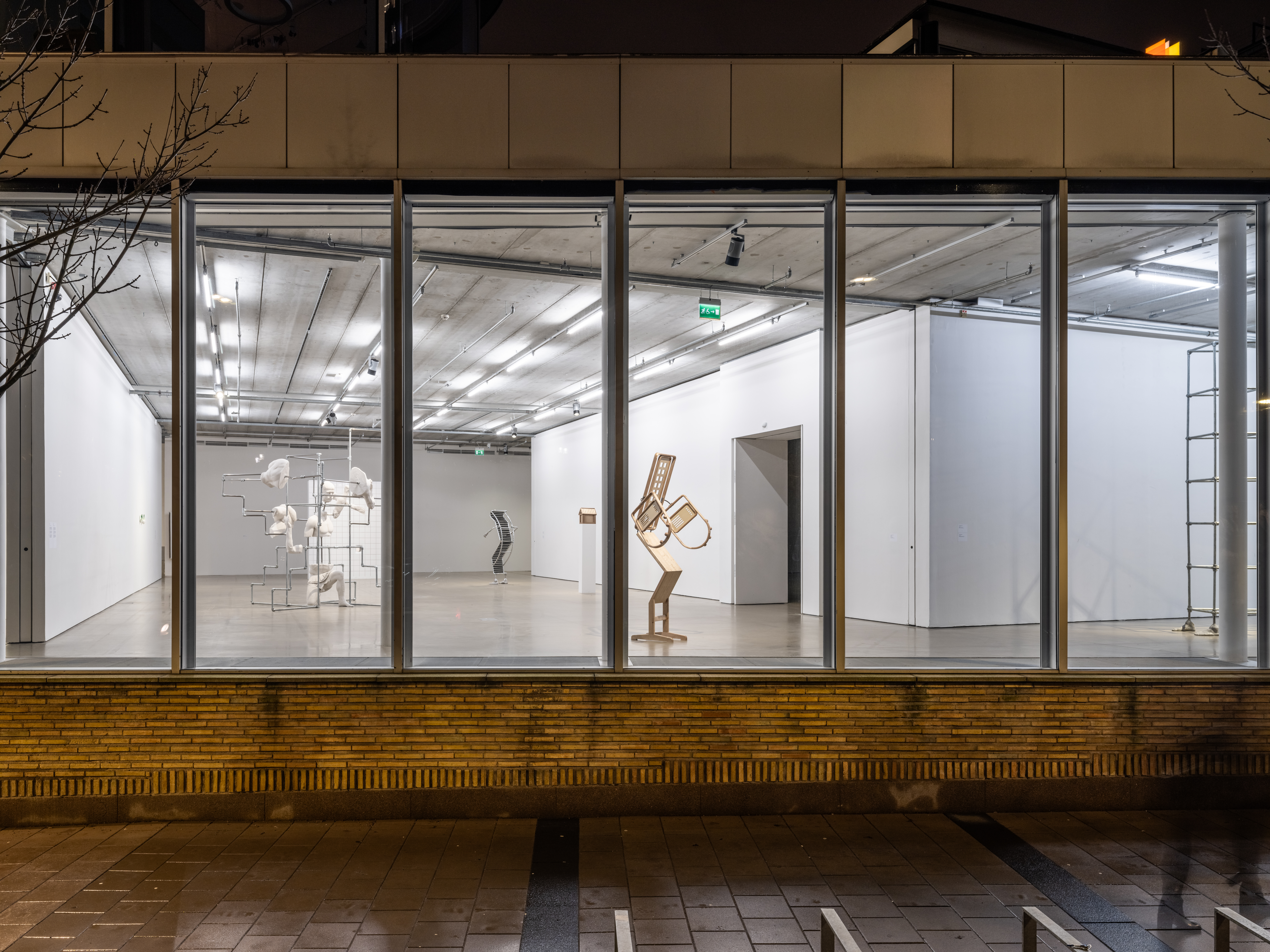
Photo: Jean-Baptiste Béranger